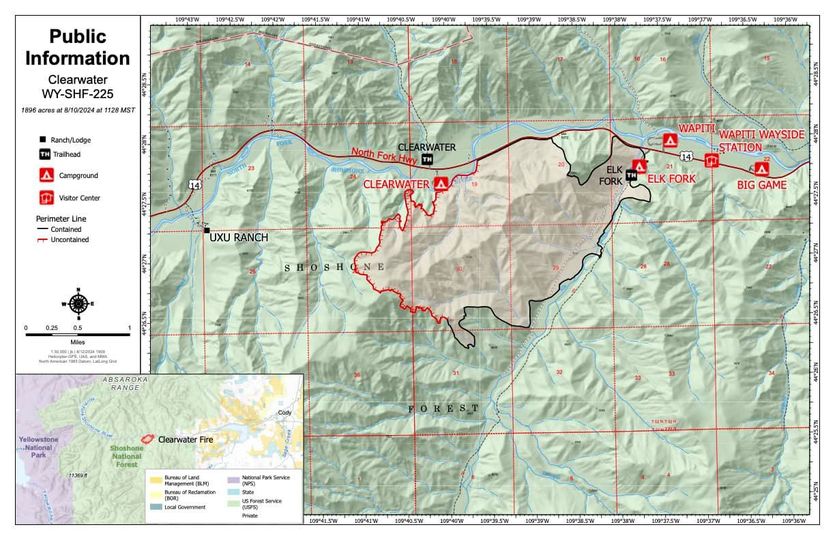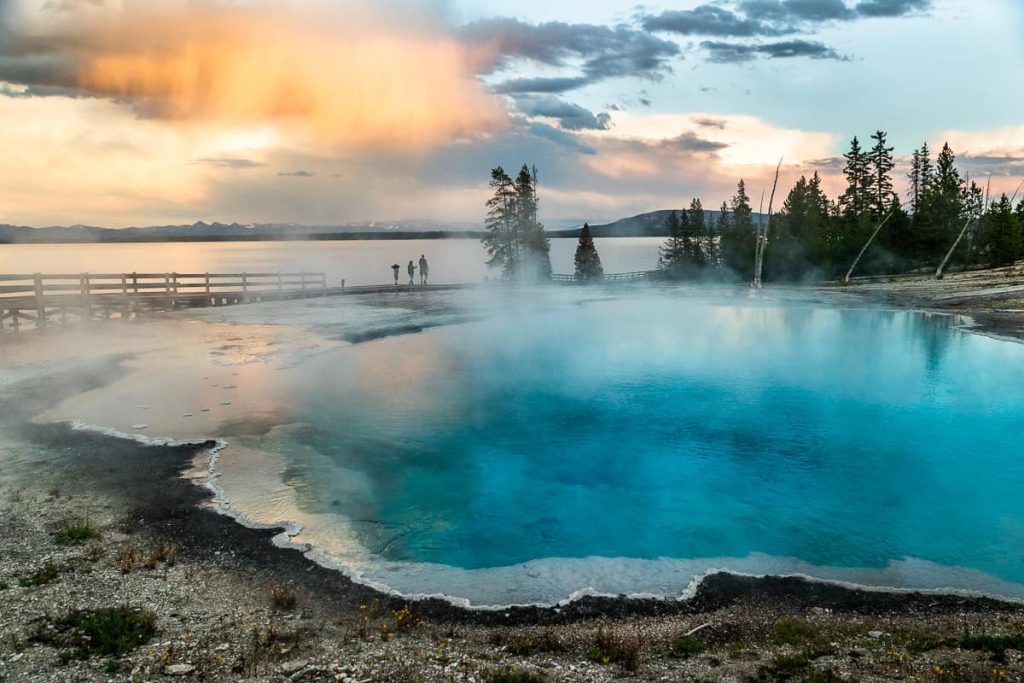Cody’s Buffalo Bill Dam: 4 Interesting Facts
Written by Nick on May 20, 2023
Buffalo Bill Dam: The Project That Made Cody Country Possible
Whether you’re a Park County resident or a visitor to Yellowstone National Park, you’ve seen the large reservoir just west of Cody and the towering dam that created it.
But you may not know about all the work that went into building the Buffalo Bill Dam and what it’s construction meant for the people who would come to call Cody country home.
If you haven’t checked out the dam and its visitor center, you really should. But in the meantime, here are some of the most important things to know about the Buffalo Bill Dam and its significance to the people living in northwest Wyoming.
1. Buffalo Bill Gave His Water Rights to Enable Irrigation and Farming
Agriculture is the industry families depend on across much of the Equality State, and northwest Wyoming is no exception. However, as crucial as farming is to this area and its residents, it’s only been going on for a little over 100 years.
Before the Buffalo Bill Dam was constructed at the beginning of the 20th century, the area around what’s now Cody and Powell was prohibitively dry. But after Wyoming gained statehood, William F. Cody himself — along with a group of investors — saw the potential for this land and formed the Shoshone Land and Irrigation Company.
There’d be no farmland without irrigation, Cody knew, and the project would be expensive. But the state government sought federal dollars for the project, and Cody gave his water rights to the Interior Department in 1904, paving the way for the dam’s construction.
2. The Buffalo Bill Dam Was the World’s Highest in 1910
One of the nation’s first concrete arch dams, the Buffalo Bill Dam was truly something to behold upon its completion in 1910. It surpassed the Croton Dam in New York as the world’s highest, standing 325 feet high.
Even today, the Buffalo Bill Dam is one of the most incredible sights to see near Cody, Wyoming. But the construction was anything but easy, and this feat of engineering took a toll.
The Shoshone is a powerful river, dropping over 7,000 feet before reaching the dam site. In the summer, rapid winter runoff would bring troublesome debris. A foundation pit flooded in the spring of 1908, and crews had to start their work from scratch.
Freezing temperatures in the winter months caused several worker deaths. The last of the dam’s concrete was poured on January 15, 1910 — when the temperature fell to -15F.
The Buffalo Bill Dam was one of the first projects undertaken by the U.S. Reclamation Service, and was touted as a huge success along with the agency’s other accomplishments, such as the Panama Canal.
3. The Dam Just One Part of the Shoshone Project
Originally, Cody’s Shoshone Land and Irrigation Company obtained water rights to irrigate some 60,000 acres in Park County. But soon, those who supported the plan to farm in the Bighorn Basin were intent on irrigating 150,000 acres.
Their overarching Shoshone Project — which included construction of the Buffalo Bill Dam, the reservoir, tunnels, diversion dams, and canals – ultimately resulted a total of over 93,000 irrigated acreas today.
What was once an isolated desert valley was now arable farmland, setting the state for settlement and the communities of Park County as we know them today. The most prominent crops include sugar beets, oats, barley, beans, and alfalfa.
As other elements of the Shoshone Project were completed, the area became a more suitable place for people to live and work. These other developments included the Shoshone Power Plant, Shoshone Canyon Tunnel, Heart Mountain Power Plant, Buffalo Bill Power Plant, and Spirit Mountain Powerw Plant.
4. It’s Listed on the National Register of Historic Places
Although most Americans don’t even know that this little dam exists today, it’s difficult to overstate the significance of the Buffalo Bill Dam in transforming what was once an inhospitable landscape into an area that could support the vibrant communities that now call the Bighorn Basin home.
Within five years of the creation of the National Register of Historic Places, the Buffalo Bill Dam was added to it in 1971. Two years later, the dam was also designated a National Historic Civil Engineering Landmark by the American Society of Civil Engineers.
Without the dam, Buffalo Bill Reservoir and Buffalo Bill State Park wouldn’t exist. These are just two of the top recreation destinations for area residents and visitors alike.
Actually, when the dam was completed, it was dubbed the Shoshone Dam. It wasn’t renamed to honor William F. Cody’s contributions until 1946.
All in all, the dam itself boasts a volume of 82,900 cubic yards. Construction cost $1.4 million.
Renovation work to raise the crest of the dam by 25 feet began in 1985. When completed in 1993, this effort gave Buffalo Bill Reservoir an additional capacity of 260,000 acre-feet.
In June 2022, historic flooding changed much of Yellowstone National Park and had significant downstream impacts. To get an idea of just how much water was involved, check out this video of the Buffalo Bill Dam spilling more than it had in years.



